6 Tips for Making Your Own Music
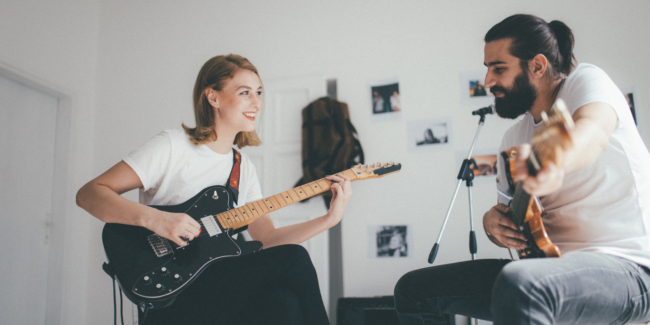
Do you feel like you have songs burning inside you? Making your own music is simpler than you might think! Follow these six tips to begin your songwriting journey.
Many of the greatest songwriters describe making music as having a ghost or fairy visit you in the night. In ancient Greece, they would call it the muse. All they had to do was get out of their own way and listen to the voices in their head.
But that’s the glamorous side of songwriting. The other side is very technical–hours of analysis, trial, and error, and workshopping until the song is perfect.
Whether or not you were born with a songwriting muse, you can learn and improve in the art of songwriting. Here’s six pro tips to launch you in the right direction.
1. Begin learning piano with Simply Piano
While it’s possible to write songs without an instrument, you will have more freedom if you learn to play something. Even the most basic skills on piano or guitar can open you up to sounds and inspiration.
Most importantly, it will give you a language for communicating what you hear in your head.
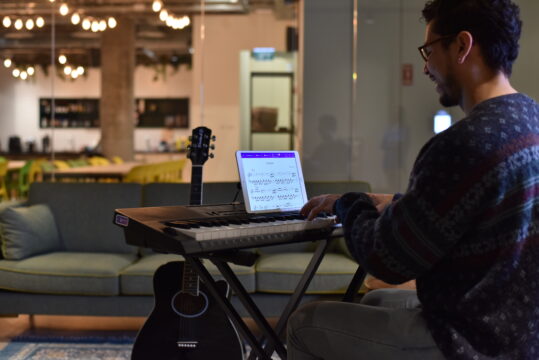
The Simply Piano app by JoyTunes is the perfect way to start on piano. From the comfort of your home, with the touch of an iPad or iPhone, you will receive step-by-step and interactive guidance.
Lessons are structured into different topics, ranging from chords and scales to rhythm and technique, all in varying difficulty levels.
If songwriting is your primary goal, we recommend focusing on learning chords. Within just a couple of lessons, you will learn to play the famous four-chord progression. This is one of the most common formulas of popular music–thousands of songs use it.
The formula is 1-6-4-5. For example, in the key of C, the progression would be C-Am-F-G.
For more information on chord progressions, check out this article.
2. Improvise with scales and chords
Once you have some basic chords and scales under your fingers, the best way to get your creative juices flowing is to improvise with them.
Improvisation has this unusual way of bringing musical ideas to the surface.
You know how sometimes you need to speak about the way you feel to understand it? Sometimes the music in your heart can’t find its way out until you start improvising.
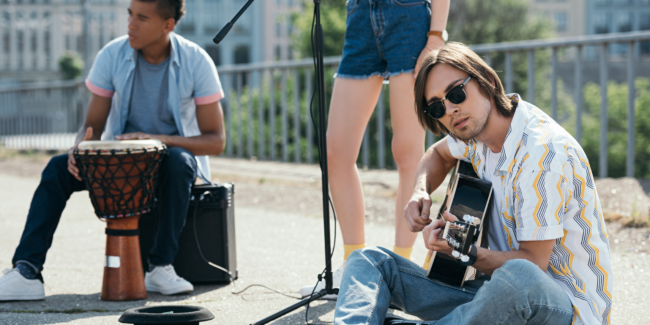
The problematic thing about improvising is that there is so much freedom.
Where do you start?
Start by reducing that freedom. Give yourself some simple limitations, and your wheels will start to turn.
For example, you could take a major scale and improvise only using those seven notes. If you’re a beginner at piano, try this with a manageable scale like C or G major. Don’t worry about playing in time–just experiment with these notes in different orders and combinations–and you may hear a melody when you let go and just let the music play.
Another way is to find a youtube video with some kind of backing track you can jam to. There are thousands! Make sure it has a groove and a chord progression like this one, for example.
Press play while sitting at your piano and let yourself improvise freely over these chords. You should primarily use the notes of whatever scale you’ve chosen in your backing track, but go wild.
Play the wrong notes and see what kind of effect they create. This can inspire interesting and original melodies.
3. Practice lyric writing exercises
Sometimes we can feel a burning desire to write a song, but we’re not sure what about. Emotions can be overwhelming and difficult to access.
Just like improvising over chords and scales to turn our musical wheels, lyric writing exercises are essential for finding the story we want to tell. Here’s a couple from another JoyTunes blog post that you might find helpful.

Something important to keep in mind when writing lyrics is using a balance of metaphor and naturalistic language. If the writing is too high and lofty, people will struggle to connect. If it’s too casual and conversational, you’ll struggle to transport the listeners into your world.
You can practice this by writing a metaphor and a naturalistic description of the same thing. For example:
Naturalistic:
Looking out the window, feeling lonely.
Couldn’t stop thinking about my ex, the way he held me
Miss him so much, I wonder how it could have been today.
Metaphor:
My loneliness stared me down through the glass
The memory of the embrace, it shackles me
The longing and the loop of sliding doors.
4. Start singing
Try singing them once you’ve got some lyrics down and are happy with their story or message You may feel like the lyrics already imply the melody if you’re an intuitive songwriter. If that sounds like gibberish to you–don’t stress.
Throw yourself in the deep end and have a crack at singing your lyrics in whatever way they naturally emerge. Record this to go back in another session and see if there was any magic.

If you don’t have lyrics yet but want to start the songwriting process, just sing whatever! Singing is the best way to connect your mind and body to music–it makes the music come out of you. You can make up words, just sing aah, or take somebody else’s words and improvise a new melody.
No matter how you approach it or where–in the shower, on a walk, in the elevator–singing is a surefire way to call for your songwriting muse.
5. Analyze your favorite music
One of the greatest visual artists, Pablo Picasso said, “Good artists borrow. Great artists steal.”
We don’t condone ripping off somebody else’s music, but immersing yourself in music that you love will inspire your creativity. All music uses the same materials–melody, harmony, and rhythm. What makes it unique is you and the music moving through you!
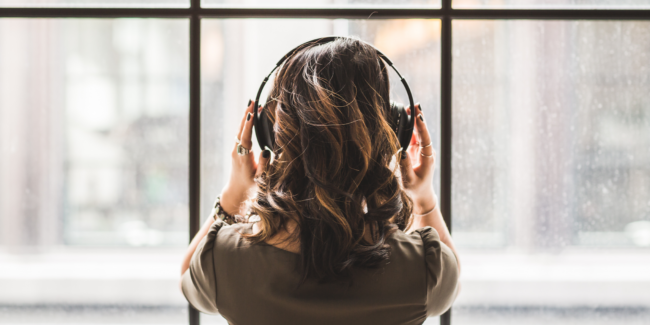
Choose a song that you love, and follow this checklist to help analyze and understand how the song works its magic. You will have so much information to guide you in your own music-making by the end.
- What is the time signature?
- Is the key major or minor?
- Is the groove laid back or pushing forward?
- What are the instruments in the song?
- How would you describe the singer’s tone of voice?
- Is there a riff? If so, which instrument carries it?
- Is there a hook? Can you play and sing it?
- What are your five favorite lyrics in the song? What do you love about them?
- In what situation would you most want to hear this song?
- Did any parts of the song bore you?
- Did you find any elements of this song unpleasant or disturbing?
- What would you do differently in your songwriting?
- What does the song make you feel?
6. Experiment using Garageband
The wonderful world of DAW (digital audio workspaces) is vast and volatile. There is so much to learn about recording and mixing music using the various software available.
There are several popular DAW software – Cubase, ProTools, Logic, Ableton, etc. A great place to start is Garageband.
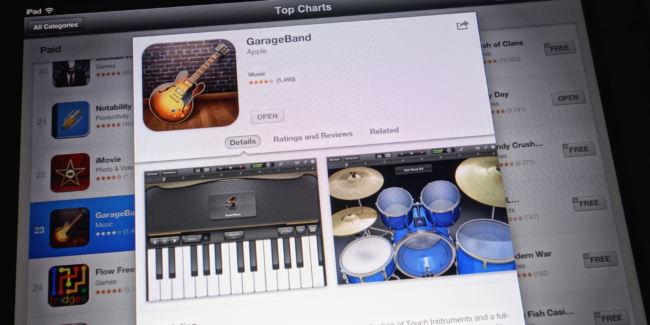
Garageband is great for beginners who are just dipping their feet in music production. It uses a simple and accessible format for recording audio and connecting to other tools. It includes quality plugins for exploring effects, equalization, and everything you need for the production and mixing side of making music.
Garageband also includes many inbuilt loops of beats, chord progressions, and melodic riffs. You can use these to create music easily without even playing a note.
Loops are a shortcut and by no means a replacement for understanding music. But experimenting with them can be a good learning experience for beginners because it’s instantly satisfying.
Check out more about DAWs here.
Make music, not war.
Music brings people together. It reminds us of what is important. Any time you spend improving at playing music, or songwriting is time well spent.









